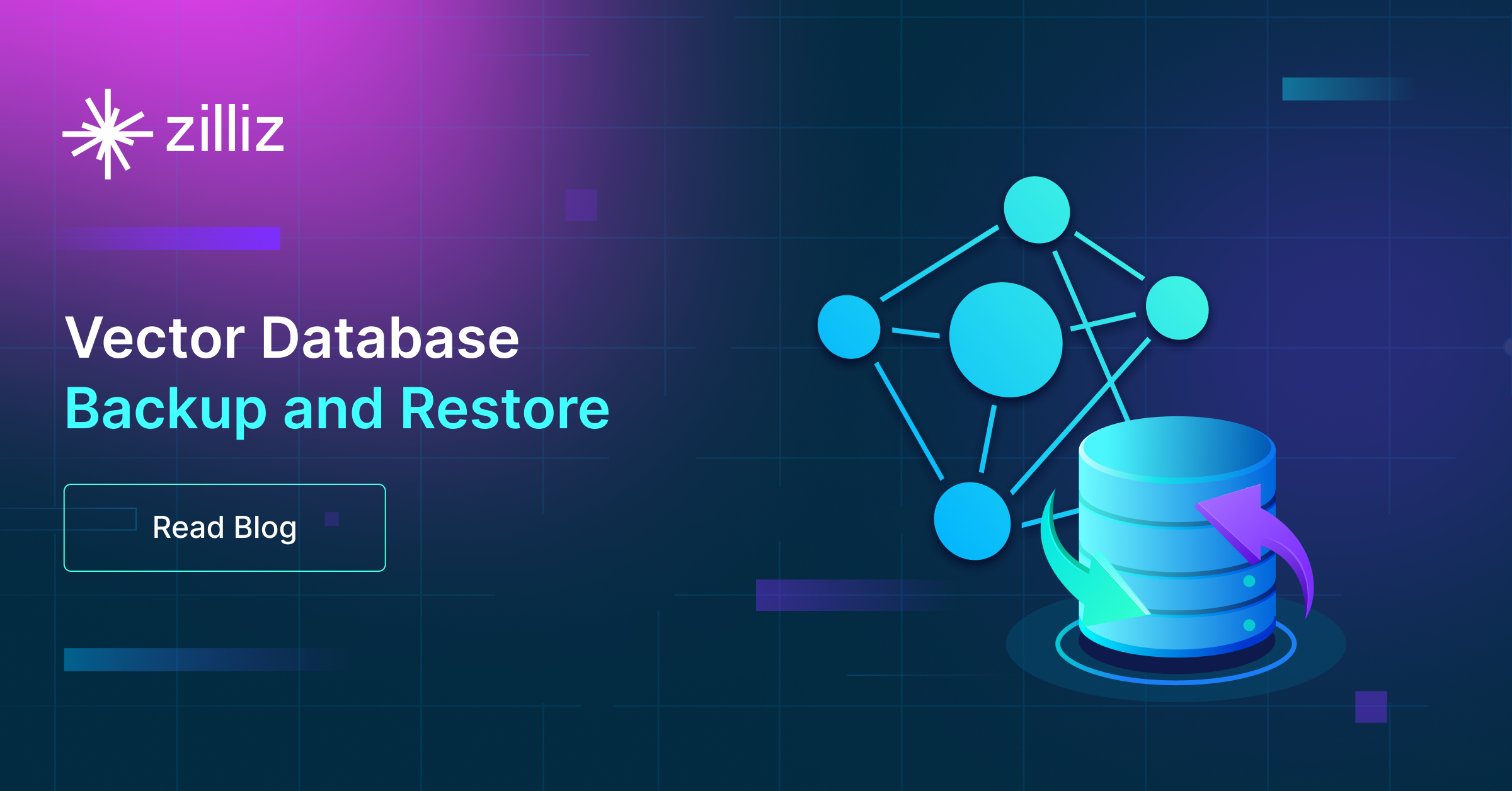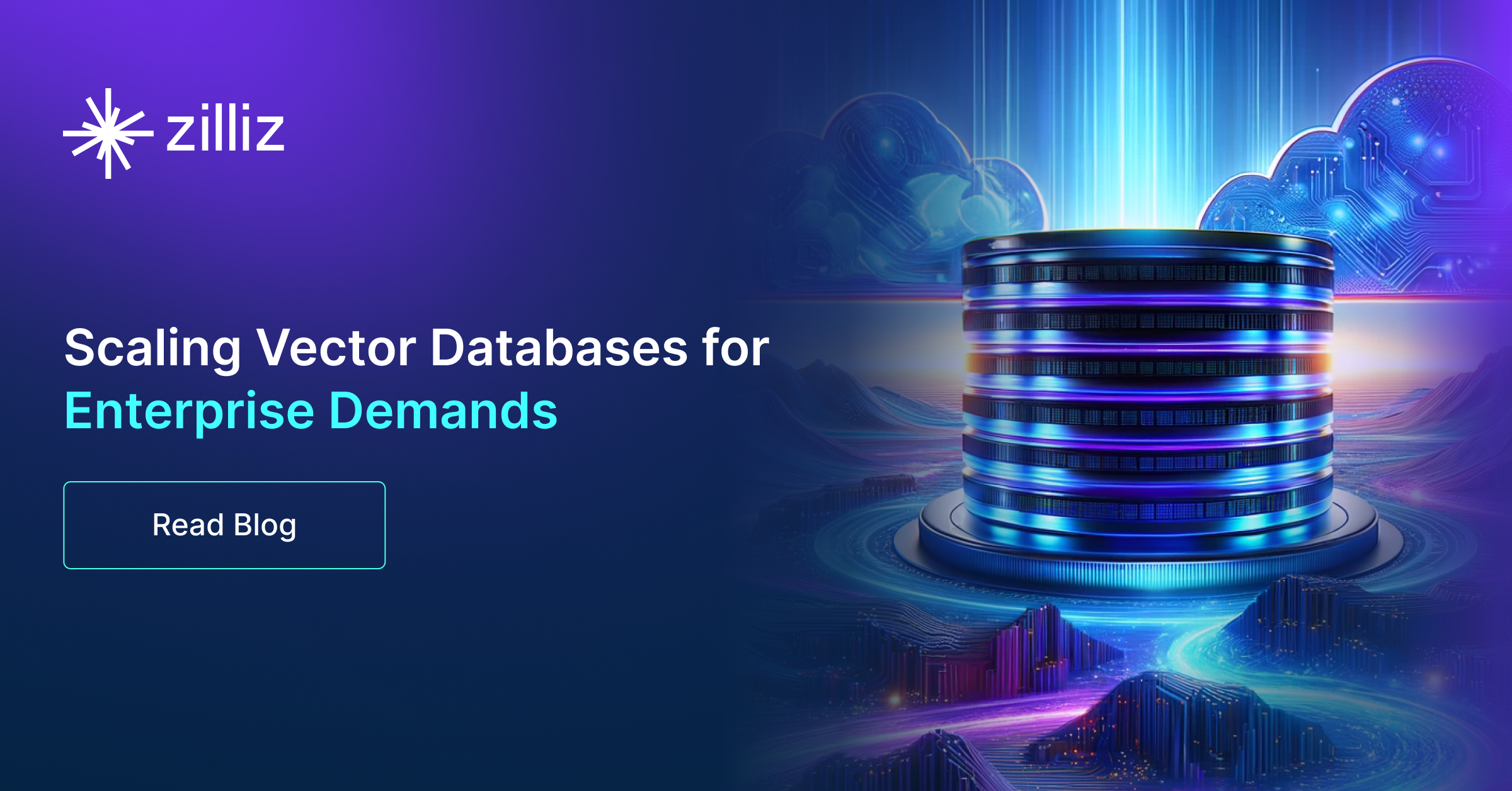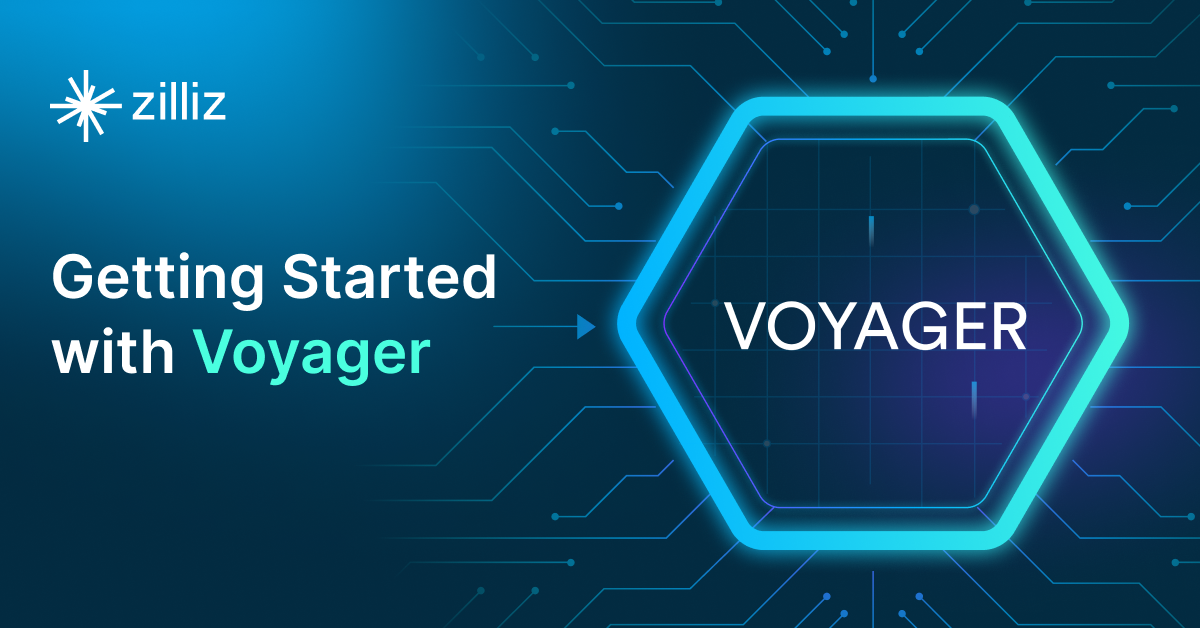Integrating Vector Databases with Cloud Computing: A Strategic Solution to Modern Data Challenges
Integrating vector databases and cloud computing creates a powerful infrastructure that significantly enhances the management of large-scale, complex data in AI and machine learning.
Read the entire series
- Safeguard Data Integrity: Backup and Recovery in Vector Databases
- Integrating Vector Databases with Cloud Computing: A Strategic Solution to Modern Data Challenges
- Maintaining Data Integrity in Vector Databases
- Deploying Vector Databases in Multi-Cloud Environments
- Ensuring High Availability of Vector Databases
- Scaling Vector Databases to Meet Enterprise Demands
- Getting Started with Voyager: Spotify's Nearest-Neighbor Search Library
Cloud computing has been a rising trend over the past ten years. It transforms data management and analytics by offering greater scalability, flexibility, and accessibility than on-premises infrastructures. Cloud computing allows businesses to scale resources on demand, thus reducing costs and enabling real-time decision-making. Vector databases are a cutting-edge technology that is beneficial for efficiently getting insights from unstructured data like images, texts, and videos through high-dimensional numerical representations known as vector embeddings.
Integrating vector databases and cloud computing creates a powerful infrastructure that significantly enhances the management and analysis of large-scale, complex data, especially in areas of AI and machine learning. This relationship leverages both technologies' strengths to provide a comprehensive solution for modern data challenges.
The Essence of Vector Databases
A vector database is crafted to store, index, and retrieve data points with multiple dimensions, commonly called vectors. Unlike traditional relational databases that handle data (like numbers and strings) organized in tables, vector databases are specifically designed for managing unstructured data represented in multi-dimensional vector space. This design makes them highly suitable for AI and machine learning applications, where data often takes the form of vectors like image embeddings, text embeddings, or other types of feature vectors. Therefore, vector databases sometimes take on the name of AI Database.
Vector databases excel at performing similarity searches through indexing and search algorithms, swiftly identifying similar vectors within a large dataset. This capability is essential for AI native applications like Retrieval Augmented Generation (RAG), recommendation systems, and natural language processing (NLP), where processing high-dimensional data is crucial.
Overall, vector databases represent a significant evolution in database technology. They offer specialized solutions for handling the complex, vector-based data prevalent in modern AI and machine learning applications.
Cloud Computing Fundamentals
Cloud computing is a technology that allows users to access and use computing resources (like servers, storage, databases, networking, software, and more) over the internet, often referred to as "the cloud." Instead of owning and maintaining physical hardware and software, users can rent access to these resources from a cloud service provider. This model provides several benefits:
Scalability: It allows individual developers and businesses to adjust their computing resources based on demand. This flexibility ensures optimal performance and cost-efficiency as organizations can scale up or down, in or out, as needed without investing in expensive hardware infrastructure.
On-demand resources: Cloud platforms provide access to computing resources over the Internet. Major cloud providers, such as Google Cloud, AWS, and Microsoft Azure, offer various services to cater to different business needs.
Accessibility: Cloud computing enables global accessibility, with data centers located worldwide to ensure low-latency access for users worldwide.
Maintenance and management: The cloud provider is responsible for maintaining, updating, and managing the hardware and software, reducing users' IT workload.
Reliability: Many cloud providers offer reliable backup and disaster recovery services, ensuring data integrity and availability.
Synergy Between Vector Databases and Cloud Computing
The synergy between vector databases and cloud computing provides scalable, efficient, and cost-effective solutions for handling complex data analytics and AI-driven applications.
Cloud computing's scalability and elasticity are perfectly suited to the demands of vector databases, which often need to handle fluctuating workloads and rapidly expanding data volumes. The cloud's ability to dynamically allocate resources ensures that vector databases can scale efficiently, meeting the demands of high-dimensional data processing without the need for substantial upfront investment in physical infrastructure. Moreover, the cloud provides a robust infrastructure that enhances data processing performance and speed, a critical requirement for vector databases that deal with complex queries and extensive datasets.
Integrating vector databases with cloud computing also significantly benefits cost efficiency. The cloud's pay-as-you-go pricing model aligns well with vector databases' resource-intensive nature, offering a cost-effective solution for managing large datasets and complex computations. Integration with cloud services further empowers vector databases by providing access to a range of complementary tools and platforms, including machine learning algorithms, analytics services, and data visualization tools.
Finally, the reliability and security offered by cloud computing technologies are paramount for hosting vector databases, especially when dealing with sensitive or critical information. The cloud's advanced security features, data encryption protocols, and compliance with regulatory standards ensure that data is protected against various threats and breaches, maintaining high availability and trust.
Examples of Cloud-Based Vector Database Services
Cloud-based vector database services are designed to handle complex, multi-dimensional data, supporting AI and machine learning applications. Here are some examples of these services:
Zilliz Cloud is a fully managed vector database service designed for speed, scale, and high performance in enterprise-grade AI applications. It's built on top of the open-source Milvus vector database but offers advanced features and optimizations.
Pinecone is a specialized vector database service that focuses on similarity search, enabling users to build, deploy, and scale vector search applications quickly.
Weaviate is an open-source vector database that helps developers create intuitive and reliable AI-powered applications. It offers a self-hosted open-source option and a cloud-based service called Weaviate Cloud Services (WCS).
Qdrant Cloud is the cloud service version of Qdrant, an open-source vector search engine. It offers managed vector database services that leverage cloud infrastructure for enhanced scalability and performance.
These services highlight the growing trend of integrating vector database capabilities with cloud platforms, providing scalable, flexible, and efficient solutions for managing and analyzing complex data in various AI and machine learning applications.
Real-world Applications and Use Cases
An e-commerce platform can store customer profiles and product embeddings in a cloud-based vector database. Machine learning models trained on this data can generate real-time personalized product recommendations, increasing user engagement and sales conversion rates.
A healthcare provider can leverage a cloud-hosted vector database to store patient health records and medical images represented as feature vectors. Physicians can use similarity search algorithms to identify patients with similar medical conditions or imaging patterns. This enhances diagnostic accuracy, facilitates knowledge sharing among healthcare professionals, and improves patient outcomes.
A financial institution can deploy machine learning models on a cloud platform to analyze transaction data and detect fraudulent activities. The vector database enables efficient storage and retrieval of high-dimensional feature vectors, enhancing the accuracy and speed of fraud detection algorithms.
A social media platform can store user profiles, social connections, and content embeddings using cloud-based vector databases. Machine learning algorithms analyze this data to recommend relevant posts, videos, and advertisements to users. Cloud computing infrastructure supports real-time content recommendation systems' high throughput and low latency requirements.
Future Trends and Directions
Emerging trends in vector databases and cloud computing point towards technological advancements and potential future applications.
Future vector databases will likely incorporate more sophisticated query optimization techniques to enhance efficiency.
Integrating a vector database with hot and cold storage systems can significantly enhance data management and retrieval capabilities, especially when large volumes of data need to be processed efficiently.
Vector databases may evolve to support a broader range of complex data types.
Integration between vector and graph databases can unlock new possibilities for analyzing relationships and patterns in interconnected data sets.
Cloud services are moving towards edge computing. This can enhance the performance of real-time applications that rely on vector databases by reducing latency and improving responsiveness.
Future developments in cloud security can enhance the confidentiality, integrity, and availability of data stored in vector databases.
Conclusion
Integrating vector databases and cloud computing creates a powerful synergy that unlocks unmatched data management, analytics, and AI-driven application capabilities. This allows organizations to leverage scalable infrastructure, advanced analytics tools, and managed database services to extract insights from complex, high-dimensional data sets efficiently.
However, given their substantial potential impact across diverse sectors, including e-commerce, healthcare, finance, social media, manufacturing, and gaming, it is important to explore these technologies further. Staying informed about emerging trends and advancements in these technologies is essential for remaining competitive and grabbing opportunities in the digital economy.
- The Essence of Vector Databases
- Cloud Computing Fundamentals
- Synergy Between Vector Databases and Cloud Computing
- Examples of Cloud-Based Vector Database Services
- Real-world Applications and Use Cases
- Future Trends and Directions
- Conclusion
Content
Start Free, Scale Easily
Try the fully-managed vector database built for your GenAI applications.
Try Zilliz Cloud for FreeKeep Reading

Safeguard Data Integrity: Backup and Recovery in Vector Databases
This blog explores data backup and recovery in vectorDBs, their challenges, various methods, and specialized tools to fortify the security of your data assets.

Scaling Vector Databases to Meet Enterprise Demands
In this blog, we will explore the concept of database scalability and unravel Milvus's scaling capability. We will also introduce its scalability techniques and explore how they pave the way for unparalleled performance and innovation in unstructured data management.

Getting Started with Voyager: Spotify's Nearest-Neighbor Search Library
Voyager: a new open-source library for fast nearest-neighbor searches. Voyager uses the HNSW algorithm, outperforming its previous library, Annoy.
